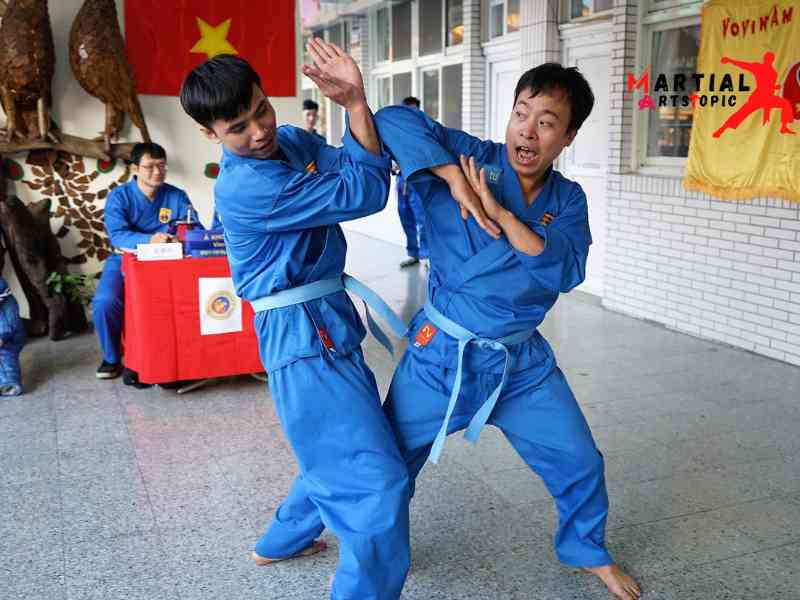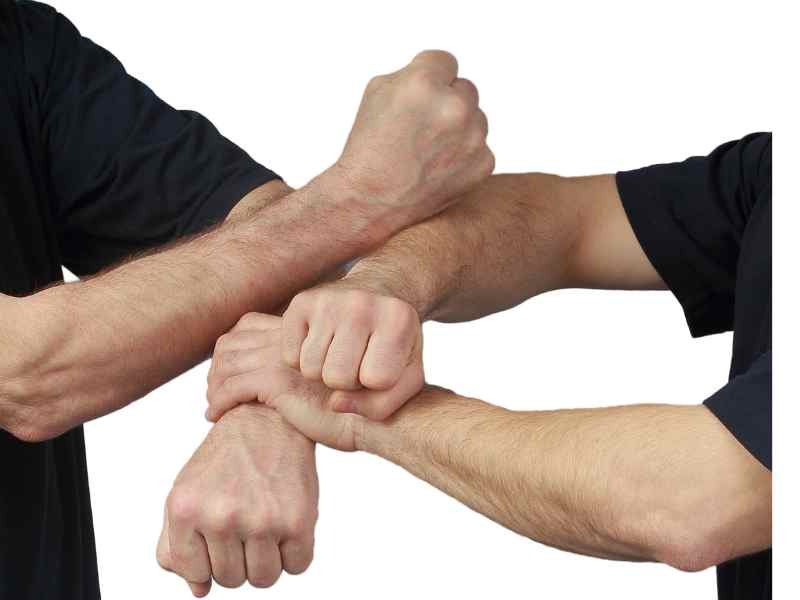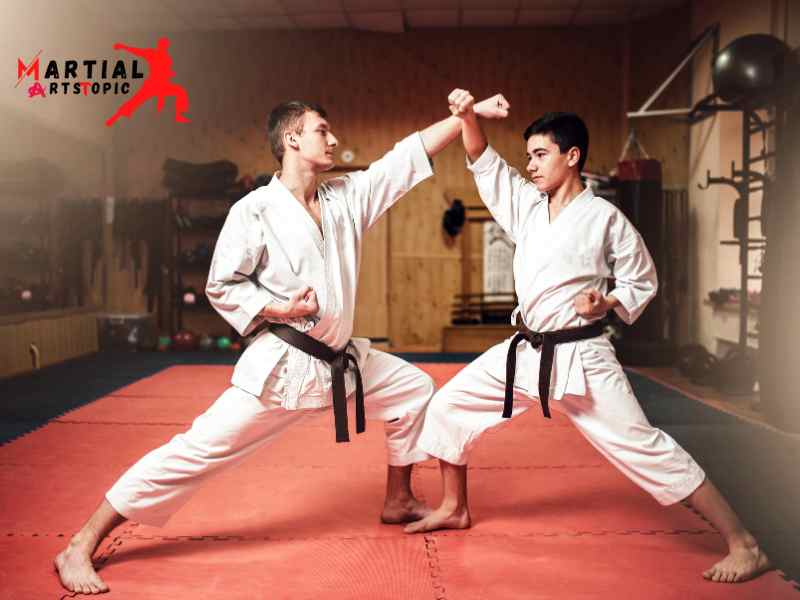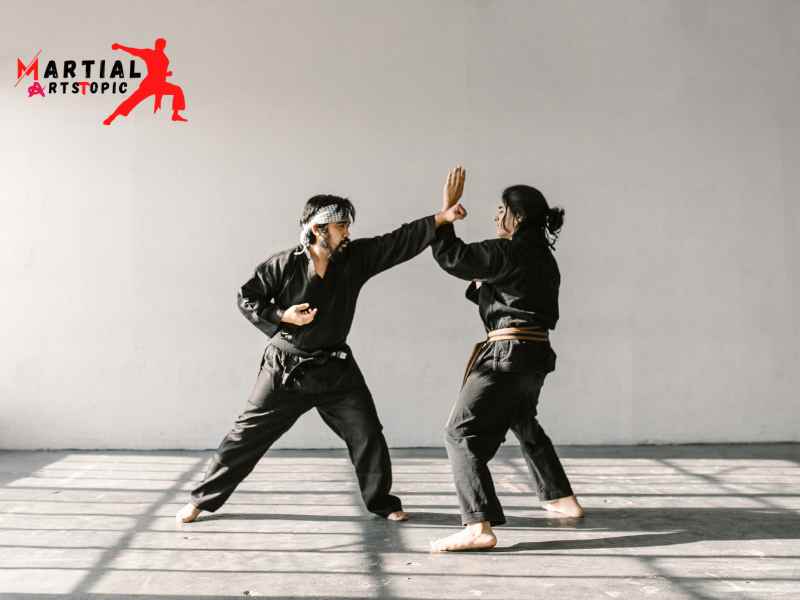
The History and Origins of Wing Chun: Unveiling the Secrets
The Secrets Wing Chun martial arts, a highly revered and effective self-defense system, has captured the fascination of martial arts enthusiasts around the world. With its unique philosophy and techniques, Wing Chun has stood the test of time and continues to be a formidable martial art to this day. The captivating history and origins of Wing Chun, shedding light on the secrets that make it such a revered discipline.
The roots of Wing Chun can be traced back to the Qing Dynasty in China during the 18th century. Legend has it that the martial art was inspired by a Buddhist nun named Ng Mui, who was a master of Shaolin Kung Fu. Ng Mui witnessed a confrontation between a snake and a crane, and from this encounter, she derived the principles and techniques that would eventually become the foundation of Wing Chun.
The name “Wing Chun” itself has an interesting origin. They derived it from the name of Yim Wing Chun, a young woman who studied under Ng Mui and became one of the first practitioners of this newly developed martial art. Yim Wing Chun’s dedication and mastery of the techniques led to the art being named after her, paying homage to her contributions.
Wing Chun’s philosophy is centered around the concept of using an opponent’s energy and force against them, rather than relying solely on brute strength. It emphasizes efficiency, practicality, and the economy of motion, making it suitable for people of all ages and physical abilities. Unlike other martial arts that rely on flashy techniques, Wing Chun focuses on simplicity and directness, making it a highly effective form of self-defense.

The techniques of Wing Chun are designed to neutralize an opponent’s attacks quickly and efficiently. It utilizes close-range combat, with a strong emphasis on hand techniques such as punches, strikes, and trapping movements. They train wing Chun practitioners to maintain a strong centerline, which allows for efficient defense and counter-attacks.
Over the years, Wing Chun has developed and branched out into different lineages and styles. The most well-known branches include Ip Man Wing Chun, founded by the legendary grandmaster Ip Man, who was famous for being the mentor of the martial arts icon, Bruce Lee. The influence of Ip Man and his disciples played a crucial role in popularizing Wing Chun globally, leading to its recognition as one of the most practical and effective martial arts.
Today, Wing Chun continues to thrive, attracting a diverse community of practitioners who appreciate its practicality, efficiency, and self-defense applications. We can see its impact in various areas, including movies, where Wing Chun has been showcased in popular films such as the “Ip Man” series, further cementing its reputation as a formidable martial art.
The Fundamental Techniques of Wing Chun
The Fundamental Techniques of Wing Chun: Unleashing the Power of Wing Chun Martial Arts. Are you looking to master the art of self-defense? Interested in a martial art that focuses on practical techniques and efficient movements? Look no further than Wing Chun, a traditional Chinese martial art renowned for its simplicity, effectiveness, and unique approach to combat. In this blog post, we will delve into the fundamental techniques of Wing Chun and explore the ins and outs of this powerful martial art.
What is Wing Chun martial arts?
What is Wing Chun martial arts? Wing Chun is a traditional Chinese martial art known for its practicality and efficiency in close-range combat. It emphasizes balance, structure, and positioning rather than brute force, making it suitable for individuals of all ages and physical abilities. Developed by a Buddhist nun, Ng Mui, and named after her first student, its focus on simultaneous defense and attack, centerline theory, and rapid, direct strikes characterizes Wing Chun. Practitioners learn to generate power from the core, execute precise movements, and intercept opponents’ attacks effectively. Wing Chun also incorporates trapping, grappling, and striking techniques, providing a comprehensive approach to self-defense and combat. This martial art’s emphasis on sensitivity and adaptability makes it a valuable skill for real-world situations, promoting mental and physical well-being.
The Core Principles of Wing Chun
At the heart of Wing Chun are a set of core principles that guide every aspect of this martial art. These principles include centerline theory, economy of motion, and simultaneous attack and defense.
Centerline Theory: Wing Chun practitioners believe in the importance of controlling the centerline, which is an imaginary line running vertically down the middle of the body. By maintaining control of the centerline, a practitioner can effectively neutralize their opponent’s attacks and launch their own counterattacks with maximum efficiency.
Economy of Motion: Wing Chun techniques are designed to be simple, and efficient. It eliminated unnecessary movements to ensure that it delivered every strike and defense with minimal effort and maximum effectiveness.
Simultaneous Attack and Defense: Unlike other martial arts, Wing Chun emphasizes the concept of simultaneous attack and defense. This means that while defending against an opponent’s strike, a Wing Chun practitioner can launch an immediate counterattack, minimizing the time and effort required to neutralize the threat.
The Fundamental Techniques of Wing Chun
We know wing Chun for its arsenal of highly effective techniques. Let’s take a closer look at some of the fundamental techniques that every Wing Chun practitioner must master.
- The Wing Chun Stance: The stance is the foundation of any martial art, and Wing Chun is no exception. The Wing Chun stance, known as “Yee Jee Kim Young Ma,” provides stability, balance, and mobility, allowing practitioners to move quickly and effortlessly.
- The Straight Punch: The straight punch, or “Jik Chung Chui,” is a signature technique in Wing Chun. I deliver it with speed and precision, targeting the opponent’s centerline. The straight punch is a powerful tool for both attack and defense.
- The Chain Punch: The chain punch, or “Lin Wan Kuen,” is a rapid-fire series of straight punches delivered in quick succession. This technique overwhelms the opponent with a barrage of strikes, leaving them little time to react.
- The Fook Sao: The fook sao, or “subduing hand,” is a defensive technique used to redirect an opponent’s attack. It involves using a circular motion to deflect the incoming strike, simultaneously setting up a counterattack.
- The Bong Sao: The bong sao, or “wing arm,” is another defensive technique that intercepts and redirects an opponent’s attack. It is performed by rotating the forearm in a circular motion, creating a barrier that blocks the incoming strike.
Training in Wing Chun
To truly master the fundamental techniques of Wing Chun, consistent and dedicated training is required. Wing Chun training involves practicing forms (or sequences of movements), drilling techniques with a partner, and applying the techniques in controlled sparring situations.
Whether you are a beginner or an experienced martial artist, Wing Chun offers a unique and effective approach to self-defense. By mastering the fundamental techniques of Wing Chun, you will develop a solid foundation in this powerful martial art. So, why wait? Start your Wing Chun journey today and unlock the power of this ancient Chinese martial art!
Mastering Wing Chun: Tips and Training Strategies
Mastering Wing Chun: Tips and Training Strategies Are you ready to take your Wing Chun martial arts skills to the next level? Whether you’re a seasoned practitioner or just starting out, this comprehensive guide is here to help you master the art of Wing Chun. Valuable tips and training strategies to improve your techniques, enhance your physical conditioning, and develop a deeper understanding of this ancient martial art.
Wing Chun is a highly effective form of self-defense that focuses on close-range combat and practical techniques. By mastering Wing Chun, you can increase your speed, accuracy, and overall fighting skills. So, let’s dive into the world of Wing Chun and discover the key tips and training strategies that will help you become a true Wing Chun master.
- Find a Qualified Instructor: To start your Wing Chun journey, it is crucial to find a qualified instructor who can guide you through the proper techniques and principles. Look for an experienced instructor who has a deep understanding of Wing Chun and can provide personalized training to suit your individual needs.
- Master the Basic Stance: The foundation of Wing Chun lies in its stance. Practice the basic Wing Chun stance, known as “Yee Jee Kim Young Ma,” which involves a balanced and relaxed body posture. This stance allows for quick movements and effective defense.
- Focus on Centerline Theory: Wing Chun emphasizes the concept of the centerline, which is an imaginary line running down the center of your body. By understanding and mastering the centerline theory, you can effectively attack and defend simultaneously, making your moves more efficient and powerful.
- Develop Chi Sau Skills: Chi Sau, also known as “sticky hands,” is a crucial training method in Wing Chun. It helps develop sensitivity, reflexes, and adaptability in close-range combat. Regular practice of Chi Sau will enhance your hand-eye coordination and improve your ability to respond quickly to your opponent’s movements.
- Incorporate Footwork Drills: Footwork is an essential aspect of Wing Chun. Practice various footwork drills to improve your agility, balance, and overall mobility. By mastering different footwork techniques, you will maneuver effectively in different situations and maintain control over the fight.
- Train with Wooden Dummy: The Wooden Dummy, or “Mook Yan Jong,” is a traditional training tool in Wing Chun. It allows you to practice your techniques with a solid structure, simulating an actual opponent. Regular training with the Wooden Dummy will refine your strikes, improve your timing, and enhance your overall precision.
- Engage in Sparring: Sparring is a crucial component of Wing Chun training. It provides a real-life scenario where you can test your skills against a resisting opponent. Participating in controlled sparring sessions will help you apply your techniques in a dynamic environment, enhance your decision-making skills, and build your confidence.
- Incorporate Strength and Conditioning: Wing Chun requires a combination of physical strength and conditioning. Include exercises such as push-ups, squats, and core training in your workout routine to develop the necessary power and endurance. Additionally, incorporate flexibility exercises to improve your range of motion and fluidity in your movements.
- Practice Mindfulness and Meditation: Wing Chun is not just about physical techniques; it also emphasizes mental focus and calmness. Practice mindfulness and meditation to improve your mental clarity, concentration, and overall well-being. This will enhance your ability to react calmly and effectively during combat situations.
- Never Stop Learning: Wing Chun is a lifelong journey of continuous learning and improvement. Stay open-minded and seek opportunities to train with different instructors and practitioners. Attend workshops, seminars, and camps to expand your knowledge and gain insights from experienced Wing Chun masters.
The Benefits of Practicing Wing Chun for Self-Defense

Wing Chun martial arts, a style known for its practicality and efficiency, has gained popularity as an effective form of self-defense. Originating from Southern China, Wing Chun focuses on close-range combat and quick, direct strikes, making it suitable for people of all ages and physical abilities.The benefits of practicing Wing Chun for self-defense.
- Simple and Effective Techniques: One of the primary advantages of Wing Chun martial arts is its emphasis on simplicity and efficiency. Wing Chun techniques are designed to be direct and straightforward, allowing practitioners to quickly neutralize threats and protect themselves. This practicality makes it an ideal martial art for real-life self-defense situations.
- Increased Awareness and Reflexes: Wing Chun training involves honing your senses and developing lightning-fast reflexes. Through repetitive drills and sparring, practitioners learn to react swiftly and instinctively to attacks. This heightened awareness not only enhances self-defense capabilities but also carries over to daily life, improving overall situational awareness.
- Practical Self-Defense Techniques: Wing Chun focuses on close-quarters combat, where most real-life altercations occur. Its techniques prioritize economy of motion, allowing practitioners to defend themselves effectively even in tight spaces. By mastering techniques such as punches, strikes, kicks, and trapping, individuals can gain the confidence to protect themselves in various real-world scenarios.
- Balanced Approach to Self-Defense: Wing Chun martial arts promote a balanced approach to self-defense that emphasizes avoiding confrontation. We teach practitioners how to de-escalate situations, use verbal communication, and employ non-violent techniques to diffuse conflicts. This philosophy, combined with Wing Chun’s practical techniques, helps individuals navigate potentially dangerous situations with composure and confidence.
- Improved Physical Fitness: Engaging in Wing Chun training offers numerous physical fitness benefits. The practice involves dynamic movements, footwork, and constant body engagement, which improve overall strength, flexibility, coordination, and cardiovascular endurance. Regular Wing Chun training sessions can help individuals achieve a healthier lifestyle while also developing self-defense skills.
- Mental and Emotional Benefits: Beyond physical fitness, Wing Chun also offers mental and emotional benefits. Training in this martial art helps individuals develop discipline, focus, and mental fortitude. It fosters self-confidence, self-control, and resilience, which can positively affect various aspects of life beyond self-defense.
- Increased Self-Confidence: Learning Wing Chun empowers individuals to take control of their personal safety. As practitioners gain proficiency in self-defense techniques, their self-confidence naturally increases. This newfound confidence extends to other areas of life, such as work, relationships, and personal growth, leading to a more assertive and self-assured demeanor.
- Stress Relief and Mindfulness: Wing Chun training provides an outlet for stress relief and mindfulness. The intense focus required during practice helps practitioners disconnect from daily worries and immerse themselves in the present moment. This mindful practice not only reduces stress but also improves mental clarity and emotional well-being.
- Community and Camaraderie: Wing Chun classes often foster a supportive and inclusive community atmosphere. Training alongside fellow practitioners builds camaraderie, as individuals motivate and learn from each other. The sense of belonging and the shared pursuit of self-improvement can significantly enhance the overall training experience.
The Role of Wing Chun in Self-Defense: Practical Tips for Personal Safety

The Role of Wing Chun in Self-Defense: Practical Tips for Personal Safety When it comes to self-defense, there are numerous martial arts styles and techniques to choose from. One style that has gained popularity in recent years is Wing Chun. Originating from China, Wing Chun is a highly effective martial art that focuses on practical self-defense techniques. In this blog post, we will explore the role of Wing Chun in self-defense and provide practical tips for personal safety.
Wing Chun martial arts, also known as Ving Tsun, is a close-range combat system that emphasizes efficiency and effectiveness. It was developed by a woman named Yim Wing Chun and is based on principles of physics and human anatomy. Unlike other martial arts styles, Wing Chun does not rely on physical strength or size, making it suitable for people of all ages and genders.
One of the key aspects of Wing Chun is its focus on close-quarters combat. They trained wing Chun practitioners to neutralize an opponent’s attack by using quick and efficient techniques. It achieved this through a unique set of techniques, such as simultaneous attack and defense, trapping, and redirecting an opponent’s energy. By using these techniques, Wing Chun practitioners can effectively defend themselves in real-life situations.
Another important aspect of Wing Chun is its emphasis on sensitivity and awareness. They train wing Chun practitioners to develop a keen sense of touch and body awareness, enabling them to anticipate and respond to an opponent’s movements. This heightened sensitivity allows Wing Chun practitioners to react quickly and effectively, even in high-stress situations.
In addition to its practical techniques, Wing Chun also provides practitioners with mental and emotional benefits. Regular practice of Wing Chun can improve focus, discipline, and self-confidence. These qualities are essential for personal safety as they enable individuals to remain calm and composed during confrontations.
Now that we understand the role of Wing Chun in self-defense, let’s explore some practical tips for personal safety:
- Find a Qualified Instructor: To learn Wing Chun effectively, it is important to find a qualified instructor who can guide you through the proper techniques and principles. Look for instructors who have a strong background in Wing Chun and a reputable lineage.
- Practice Regularly: Consistent practice is key to mastering any martial art, including Wing Chun. Set aside dedicated time for training and make it a part of your routine. Regular practice will help you develop muscle memory and improve your overall skills.
- Focus on Fundamentals: it built Wing Chun on a sound foundation of fundamentals. Mastering the basics such as stance, footwork, and hand techniques is crucial before moving on to advanced techniques. Pay attention to details and practice the fundamentals until they become second nature.
- Develop Awareness: Self-defense starts with being aware of your surroundings. Learn to observe and assess potential threats in your environment. By being aware of your surroundings, you can avoid potentially dangerous situations and take appropriate action when necessary.
- Stay Calm under Pressure: During a self-defense situation, it is natural to feel fear or panic. However, it is important to stay calm and composed. Wing Chun training emphasizes the ability to remain calm and think clearly even in high-stress situations. Practice controlling your emotions and maintaining a logical mind.
Famous Practitioners of Wing Chun: Their Contributions and Legacy
Famous Practitioners of Wing Chun: Their Contributions and Legacy Wing Chun martial arts has a rich history and has produced many famous practitioners who have made significant contributions to the art form. These individuals have not only mastered the techniques of Wing Chun but have also left a lasting legacy that continues to influence the martial arts community to this day. Some of the most renowned practitioners of Wing Chun and delve into their unique contributions.
- Ip Man: Ip Man is arguably the most famous practitioner of Wing Chun. Born in Foshan, China, he dedicated his life to the practice and promotion of Wing Chun. His most notable student was Bruce Lee, who went on to become a legendary martial artist in his own right. Ip Man’s teachings and philosophy have had a profound impact on the development and popularization of Wing Chun worldwide.
- Leung Sheung: Leung Sheung was one of Ip Man’s former students and played a crucial role in spreading Wing Chun beyond the confines of Foshan. I knew him for his exceptional skill and deep understanding of the art. Leung Sheung established the first Wing Chun school in Hong Kong and trained several influential practitioners, including Lok Yiu and Kenneth Chung.
- Wong Shun Leung: Wong Shun Leung was a highly skilled Wing Chun practitioner who emphasized the importance of practical application and real-life combat scenarios. He was known for his exceptional speed and reflexes, earning him the nickname “King of Talking Hands.” Wong Shun Leung’s no-nonsense approach to Wing Chun has influenced many practitioners, including his most famous student, Bruce Lee.
- Yip Chun: Yip Chun is the eldest son of Ip Man and has dedicated his life to preserving and promoting his father’s Wing Chun lineage. He has written several books on Wing Chun and has traveled extensively to teach and share his knowledge. Yip Chun’s contributions to Wing Chun include popularizing the art form globally and ensuring its continued growth and development.
- Sum Nung: Sum Nung is a well-respected Wing Chun master who trained under both Ip Man and Yip Chun. We know him for his deep understanding of the art and his ability to break down complex techniques into simple, practical applications. Sum Nung’s teachings have had a profound impact on the Wing Chun community, and he continues to inspire and train practitioners around the world.
- Chu Shong Tin: Chu Shong Tin is often referred to as the “Internal Wing Chun” master due to his emphasis on cultivating internal energy (known as “chi”) in his practice. I knew him for his exceptional control and sensitivity, which allowed him to effortlessly neutralize opponents. Chu Shong Tin’s teachings have had a significant impact on the understanding and practice of Wing Chun, particularly in the realm of internal energy cultivation.
Women in Wing Chun: Empowering Self-Defense for All

Women in Wing Chun: Empowering Self-Defense for All In the world of martial arts, Wing Chun stands out as a powerful and effective self-defense system. Originally developed in southern China, Wing Chun has gained popularity worldwide for its practical techniques and emphasis on efficiency. While traditionally male-dominated, Wing Chun is now attracting more and more women who are discovering the empowering benefits of this martial art.
Wing Chun martial arts offer women a unique opportunity to develop their self-defense skills, boost their confidence, and stay physically fit. Unlike other martial arts that rely on brute force and strength, Wing Chun emphasizes technique, strategy, and the efficient use of energy. This makes it ideal for women who may not possess the same physical strength as their male counterparts.
One of the key principles of Wing Chun is the concept of using an opponent’s force against them. By redirecting and deflecting an attacker’s energy, Wing Chun practitioners can neutralize threats quickly and effectively. This principle is particularly useful for women, who often face attackers who are physically stronger. Wing Chun allows women to level the playing field, using their opponent’s strength to their advantage.
Another aspect that makes Wing Chun appealing to women is its focus on close-quarters combat. Wing Chun techniques are designed to work in tight spaces, such as narrow alleys or crowded areas. This makes it a practical self-defense system for women who may find themselves in vulnerable situations where escape is not an option. With its emphasis on close-range strikes, grappling, and trapping, Wing Chun equips women with the skills they need to defend themselves in real-life scenarios.
Furthermore, Wing Chun training goes beyond physical techniques; it also cultivates mental strength and discipline. Women who practice Wing Chun develop focus, resilience, and the ability to stay calm under pressure. These qualities are not only valuable in self-defense situations, but also in everyday life. Wing Chun empowers women to take control of their personal safety and face challenges with confidence.
In addition to its self-defense benefits, Wing Chun provides an excellent full-body workout. Training in Wing Chun involves a combination of cardio, strength training, flexibility, and coordination exercises. Women who practice Wing Chun can expect to improve their overall fitness, build lean muscle, and enhance their overall physical well-being.
As more women embrace Wing Chun, they are breaking barriers and dispelling stereotypes in the martial arts world. Female Wing Chun practitioners serve as inspiring role models, proving that self-defense is not limited to gender or physique. Wing Chun empowers women to stand up for themselves, build self-assurance, and become strong, independent individuals.
Conclusion
Wing Chun martial arts is a highly effective self-defense system that focuses on efficiency, speed, and directness. With its emphasis on close-range combat and simultaneous defense and attack, Wing Chun equips practitioners with the skills and techniques necessary to defend themselves in real-life situations. Its principles, such as centerline theory and economy of motion, provide a solid foundation for practitioners of all ages and physical abilities. Furthermore, Wing Chun’s emphasis on mastering the basics and continuous training promotes self-discipline, mental focus, and overall physical fitness. Whether one’s goal is to enhance self-defense capabilities, improve physical fitness, or cultivate personal growth, Wing Chun offers a comprehensive and rewarding martial arts experience.
